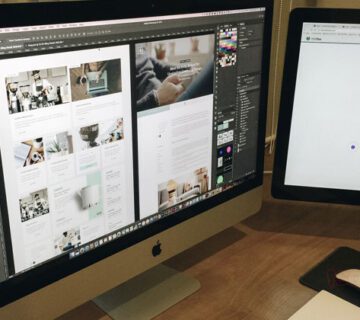Brief Intro for The Impact of Typography in Logo Design
Typography or typeface is an essential element in creating a professional logo. The right typeface can make a logo stand out and be recognizable, while poor typeface can make a logo unappealing and forgettable. In this article, we will discuss the impact of typeface in creating a professional logo, the different types of typeface, and best practices for typeface in logo design.
In the world of branding and graphic design, the use of typeface plays a critical role in creating an effective logo. The typeface you choose can make or break the overall impact of your logo, as it is the visual representation of your brand’s personality and message. In this article, we will explore the impact of typeface in professional logo and provide tips for choosing the right typeface for your brand.
The Importance of Typography in Logo Design
Typography is the art and technique of arranging type to make written language legible, readable, and appealing when displayed. In logo design, typeface is used to communicate the brand’s message, personality, and values. The right typeface can create a strong visual impact and help establish brand recognition and customer loyalty.
A Typeface can impact a logo’s readability, legibility, and memorability. A logo that is easy to read and memorable is more likely to be recognized and recalled by customers. Poor typeface can make a logo difficult to read and forgettable, which can negatively impact the brand’s image.
What is Typography?
Typography refers to the art and technique of arranging type to make written language legible, readable, and appealing when displayed. It encompasses everything from the choice of font, the size of the text, the spacing between letters and lines, and the arrangement of the words. Typography can convey a wide range of emotions and messages, from a serious and professional tone to a playful and whimsical style.

Different Types of Typography
There are two main types of typography: serif and sans-serif.
Serif is characterized by the small lines or flourishes that extend from the end of letters. Serif fonts are often associated with tradition, formality, and elegance. They are commonly used in logos for law firms, financial institutions, and luxury brands.
Sans-serif does not have the small lines or flourishes that extend from the end of letters. Sans-serif fonts are often associated with modernity, simplicity, and clarity. They are commonly used in logos for technology companies, fashion brands, and startups.
There are also display fonts, which are used to create a unique and memorable logo. Display fonts are often used in combination with serif or sans-serif fonts to create a strong visual impact.

Best Practices for Typography in Logo Design
- Choose a Typeface that Matches the Brand’s Personality
The typeface should match the brand’s personality, values, and message. The typeface should be consistent with the brand’s image and communicate the desired message. For example, a law firm may use a serif typeface to communicate tradition and formality, while a tech startup may use a sans-serif typeface to communicate modernity and innovation.
- Keep it Simple
The typeface should be simple and easy to read. A complex typeface can be difficult to read and make the logo unmemorable. The designer should choose a typeface that is clean and uncluttered.
- Use Hierarchy
Hierarchy is the arrangement of elements in order of importance. The designer should use hierarchy to emphasize the most important elements of the logo. The designer should use a larger font size, bolding, or color to emphasize the most important elements.
- Use Contrast
Contrast can create a strong visual impact and increase legibility. The designer should consider using contrasting typefaces to create a unique and memorable logo. The designer should also consider using contrasting font sizes to emphasize important elements of the logo.
- Consider the Logo’s Context
The designer should consider the logo’s context when choosing a typeface. The typeface should be appropriate for the intended audience and use case. For example, a logo intended for a billboard may require a larger font size than a logo intended for a business card.
Tips for Choosing the Right Typeface for Your Logo Design
- Understand Your Brand: Before choosing a font, it’s important to understand your brand’s personality, values, and target audience. Consider the message you want to convey and the emotions you want to evoke with your logo.
- Choose a Legible Font: Make sure that the typeface used in your logo is legible and easy to read. Avoid overly decorative or complicated fonts that may be difficult to read at smaller sizes.
- Consider Font Pairings: Combining two different fonts can add depth and visual interest to your typography logo. Choose fonts that complement each other and create a harmonious balance.
- Test Your Typography: Once you have chosen your typeface, test it across different mediums and sizes to ensure that it is legible and visually appealing. Test the font in different colors, backgrounds, and sizes to ensure that it is versatile and adaptable.
Conclusion
Typeface is a crucial element in creating a professional logo design. The right typeface can make a logo stand out and be recognizable, while poor typeface can make a logo unappealing and forgettable. When choosing a typeface, the designer should consider the brand’s personality, keep it simple, use hierarchy, use contrast, and consider the logo’s context. A well-designed logo that effectively uses typeface can create a strong visual representation of the brand and help establish brand recognition and customer loyalty.
Typeface plays a significant role in professional logo design. It conveys brand personality, creates brand recognition, improves readability, and establishes consistency. By understanding your brand, choosing a legible font, considering font pairings, and testing your typeface, you can create an effective and memorable logo that resonates with your audience.



No comment